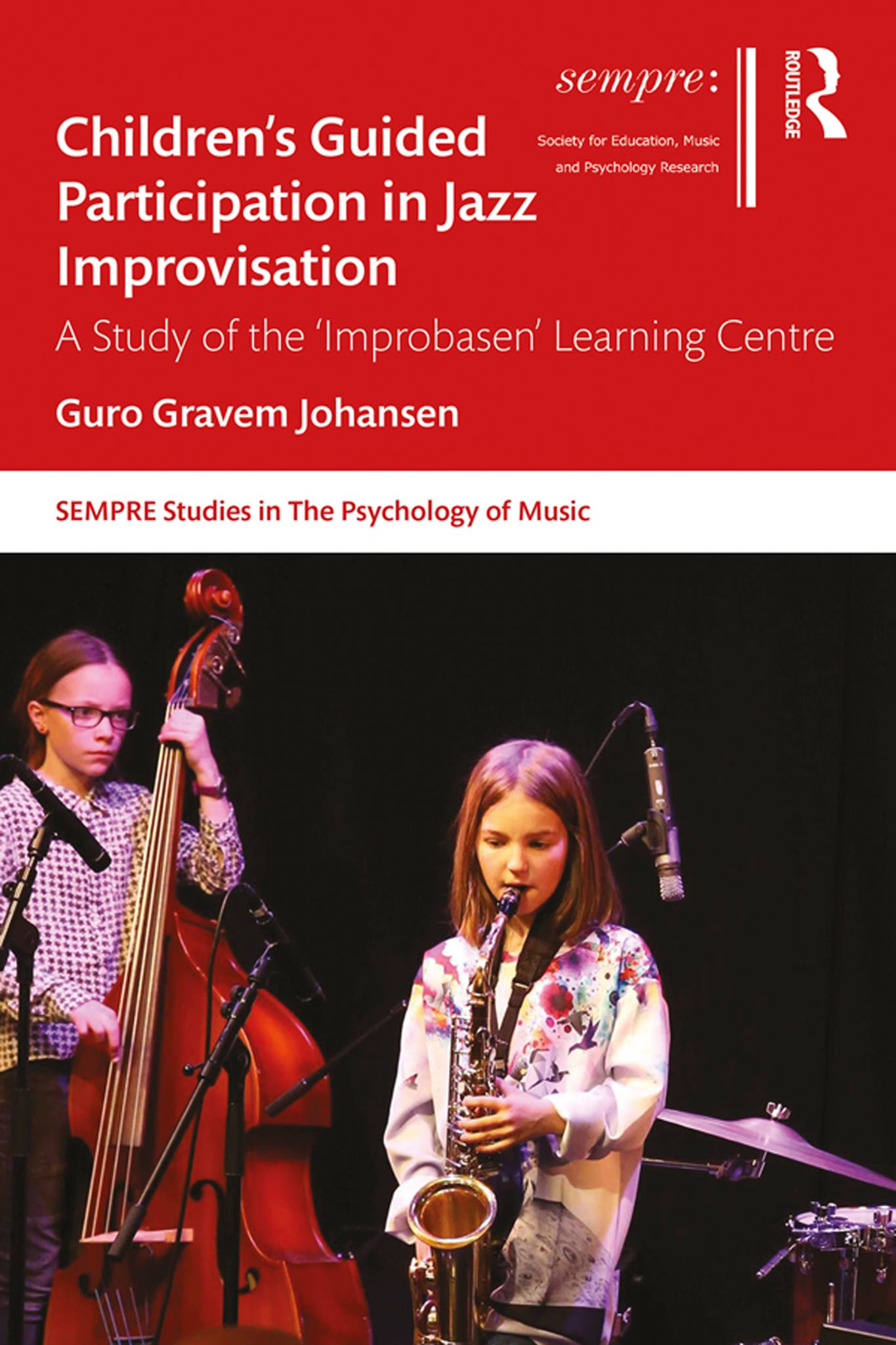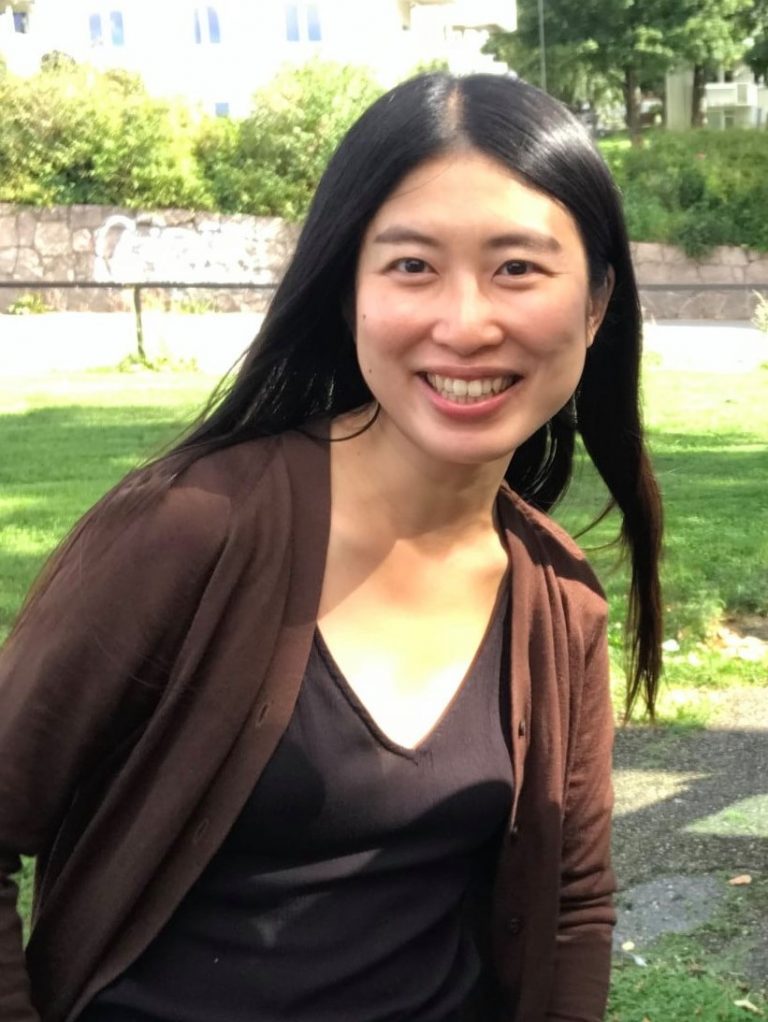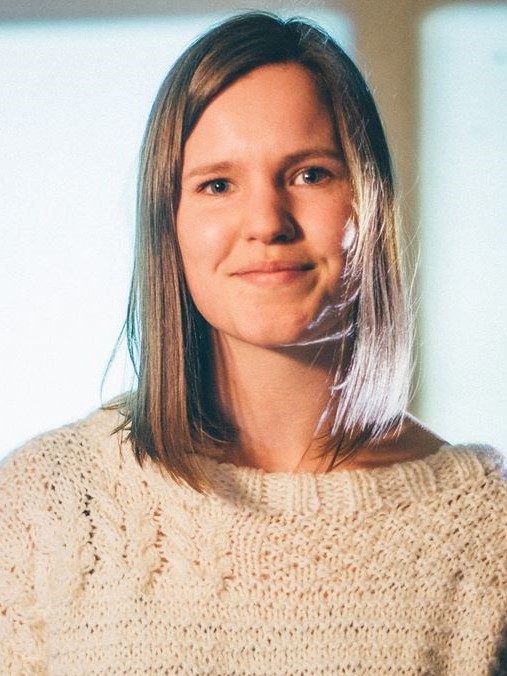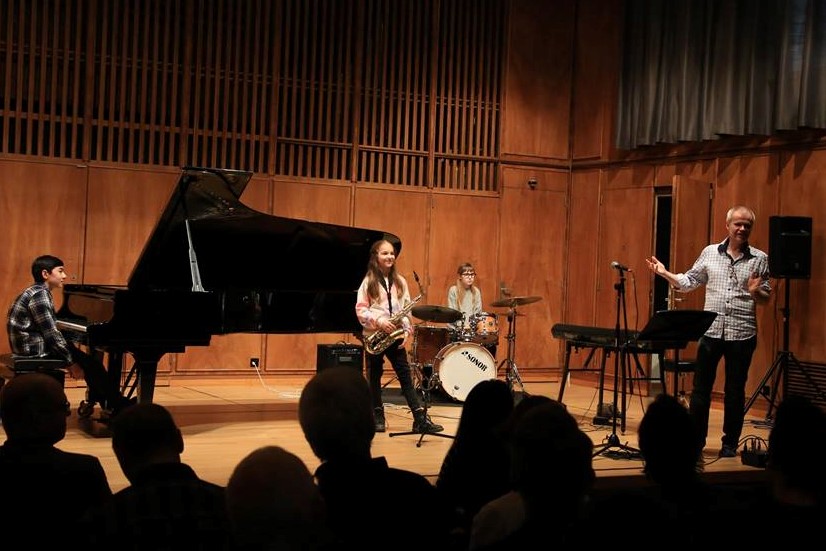Boklansering

30. november kommer Guro Gravem Johansen's bok "Children’s Guided Participation in Jazz Improvisation" ut på det anerkjente forlaget Routledge, SEMPRE series. Den springer ut av to års etnografisk følgeforskning på lærings- og undervisningsaktiviteter ved Improbasen, og skildrer trekk fra mikro-interaksjoner mellom lærere og elever på undervisningstimer, beskriver hvordan Improbasen var organisert i perioden forskningsprosjektet pågikk, og Improbasen's internasjonale aktiviteter.
Perspektivene som presenteres er relevante for pedagoger, studenter og forskere innen musikkpedagogikk og jazzforskning. Boken viser hvordan elevene ved Improbasen systematisk tilegner seg verktøy for å improvisere, og felles koder for samspill med andre barn på tvers av geografi, alder, kultur og kjønn.
Gjennom en prosess med "ledet deltakelse" [guided participation] i jazzkulturen, blir barn fra svært ung alder myndiggjort til å kunne ta del i en global, kreativ musikalsk praksis, med improvisasjon som kjerneinnhold. Boken undersøker på ein kritisk måte aktuelle diskusjoner rundt jazzpedagogikk, inkludering og kjønnsbalanse, nybegynneropplæring på instrument, instrumentalundervisning, kreativitet og autentisitet i barndommen.
Ingrid Monson, Quincy Jones Professor of African-American Music, Department of African American Studies, Harvard University, USA, skriver om boken:
'Guro Gravem Johansen’s new book, Children’s Guided Participation in Jazz Improvisation, provides an innovative ethnography of the Improbasen school’s creative approach to teaching jazz improvisation to children and young people between the ages of seven and fifteen.
Johansen carefully documents how Improbasen teaches young children how to improvise as they learn their individual instruments and become musicians capable of performing with others.
There are many noteworthy pedagogical innovations in the Improbasen curriculum including teaching gender and ethnic inclusion, and ethical modes of social interaction.
Johansen’s analysis emphasizes the creation of micro-communities through musical improvisation and the school’s critique of traditional modes of jazz pedagogy.
Especially noteworthy is Johansen’s documentation of Improbasen’s emphasis on gender inclusivity from an early age, which successfully results in the full participation of female students in what is often regarded as a masculine art form.
In demonstrating the capability of the female students, Johansen shows how the study of children’s acquisition of musical skills can have socially transformative results.' Ingrid Monson, Quincy Jones Professor of African-American Music, Department of African American Studies, Harvard University, USA
Ken Prouty, PhD, Associate Professor, Musicology and Jazz Studies, Michigan State University, USA skriver:
'Guro Gravem Johansen’s Children’s Guided Participation in Jazz Improvisation stands as an important contribution to jazz and improvised music scholarship, focusing on the experiences of individuals who are not commonly considered in the music’s literature.
Drawing upon the fields of musicology, ethnography, music education, Johansen both builds upon and offers alternatives to existing scholarship in jazz and musical learning that will find a warm and receptive audience.
In the introductory chapter, Johansen makes the case for her study, noting that jazz researchers have tended to ignore “children playing jazz”. But children are, as she points out, among the most active and receptive of musical learners. The jazz community’s lack of direct engagement with children’s experiences in the music calls for a corrective, which Johansen provides in subsequent chapters through a close examination of Improbasen, a Norwegian learning center which focuses on the facilitation of improvisation in children.
Chapter 3, for example, describes the nature of the center, tracing its development, demographic profile, and underlying principles, or the “way” that musical learning at Improbasen is structured and practiced. Central to these principles, Johansen writes, is the desire of Improbasen’s founder to “unite all the world’s children in jazz.”
In a later chapter, Johansen engages more deeply with children’s engagement with a genre that is “constructed as adult’s music”. In examining Improbasen’s programs for teaching jazz to children, Johansen also calls into question the very notion of jazz as “adult music”. The desire to have children play jazz, while still being true to their “authentic” selves as children, serves as a catalyst for a deep, probing discussion of embedded assumptions about jazz, childhood, creativity, and identity.
In closing, I am happy to endorse Johansen’s book, as it is a deeply researched and engagingly written study. I will look forward to seeing it in print, and I am confident that it will stimulate spirited debate among jazz communities, and in the field of musical learning in general."
Flere omtaler og info om boken på forlagets nettsider






